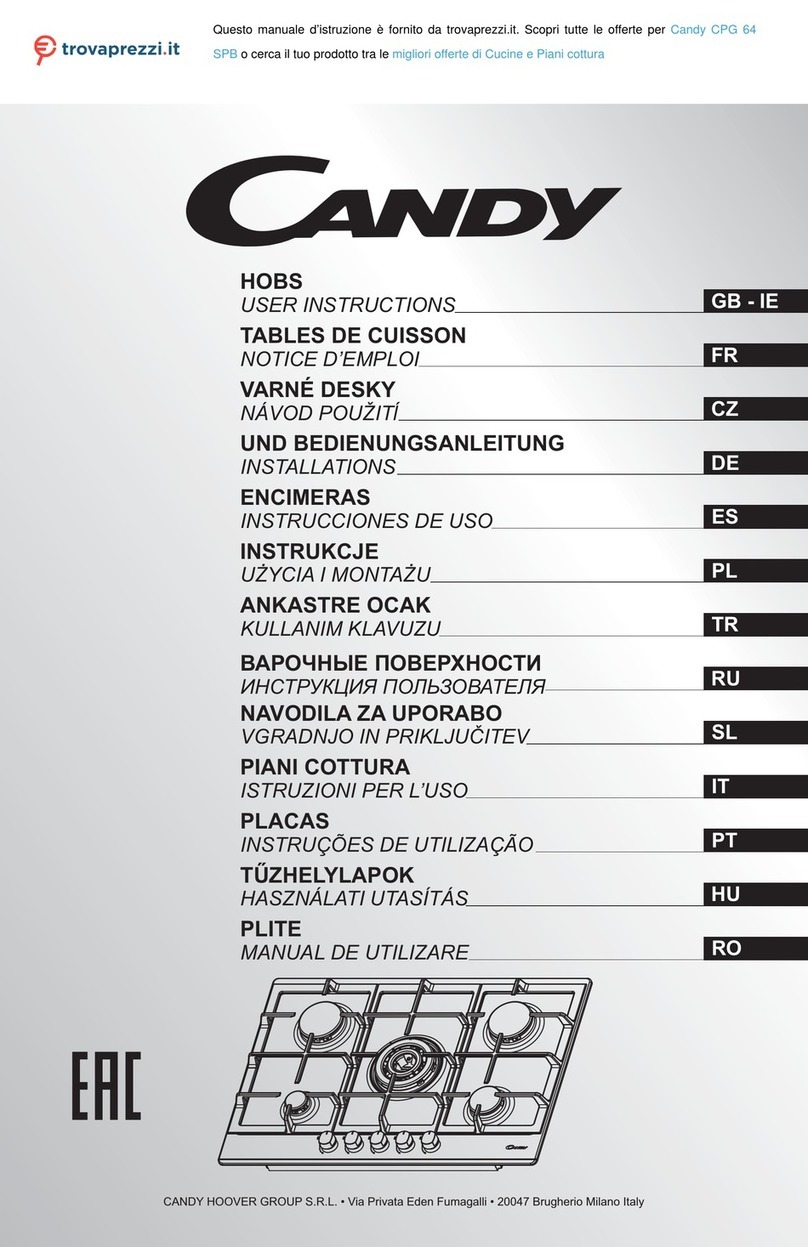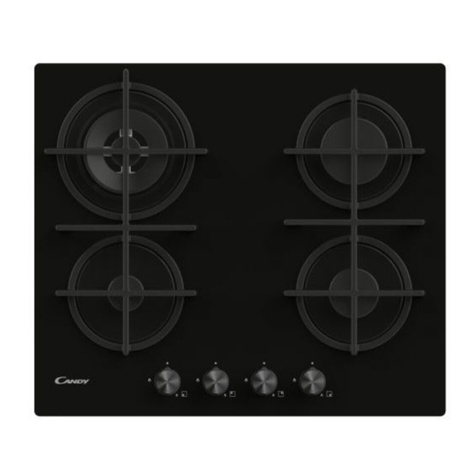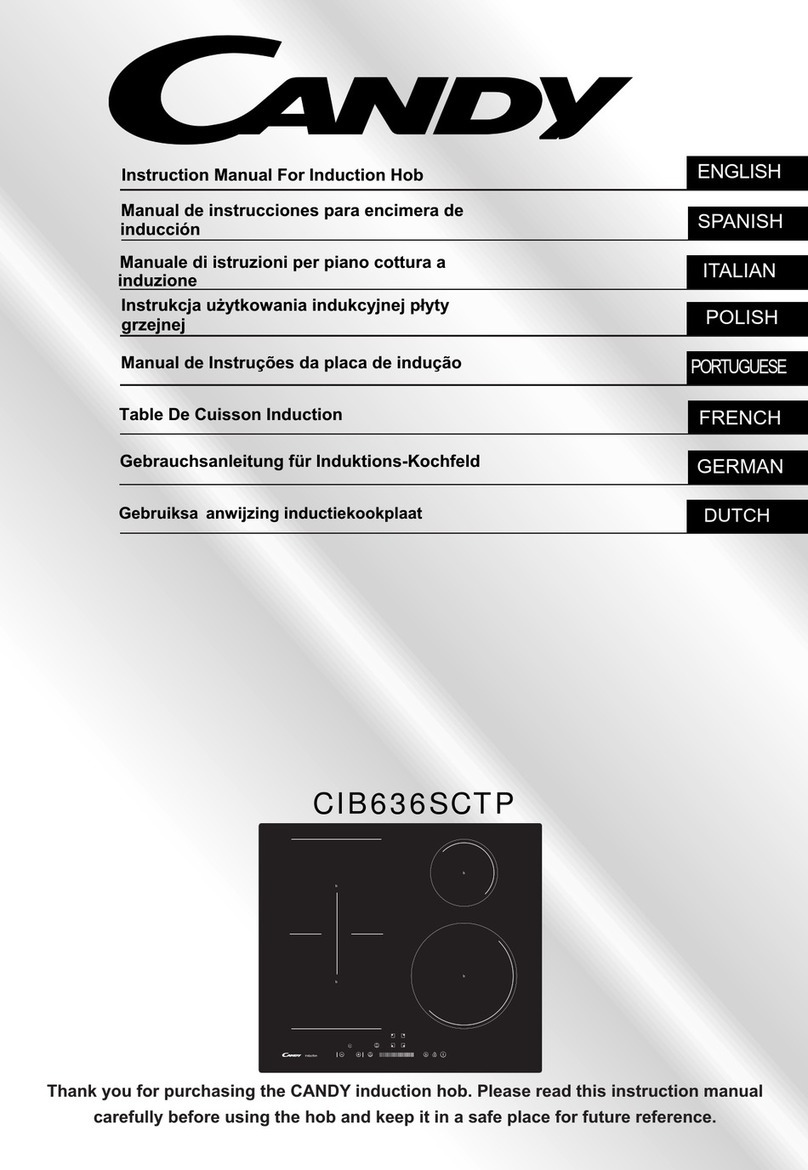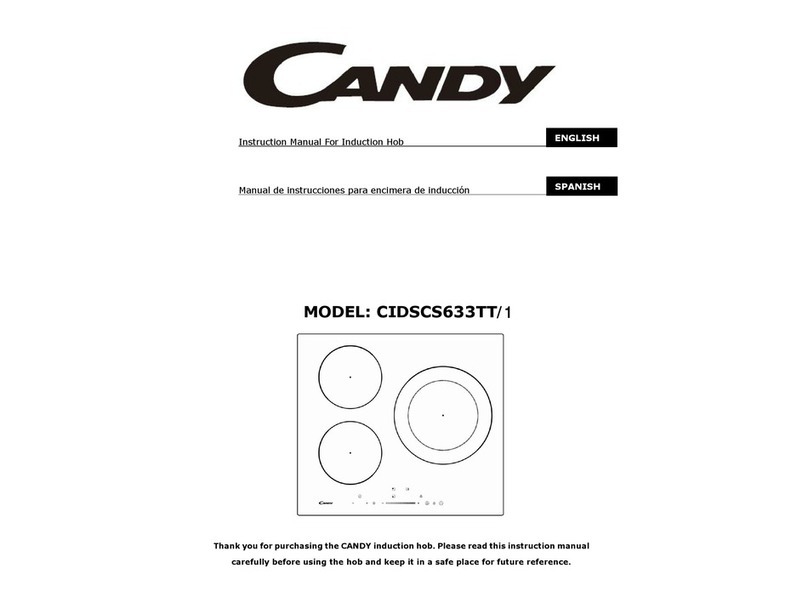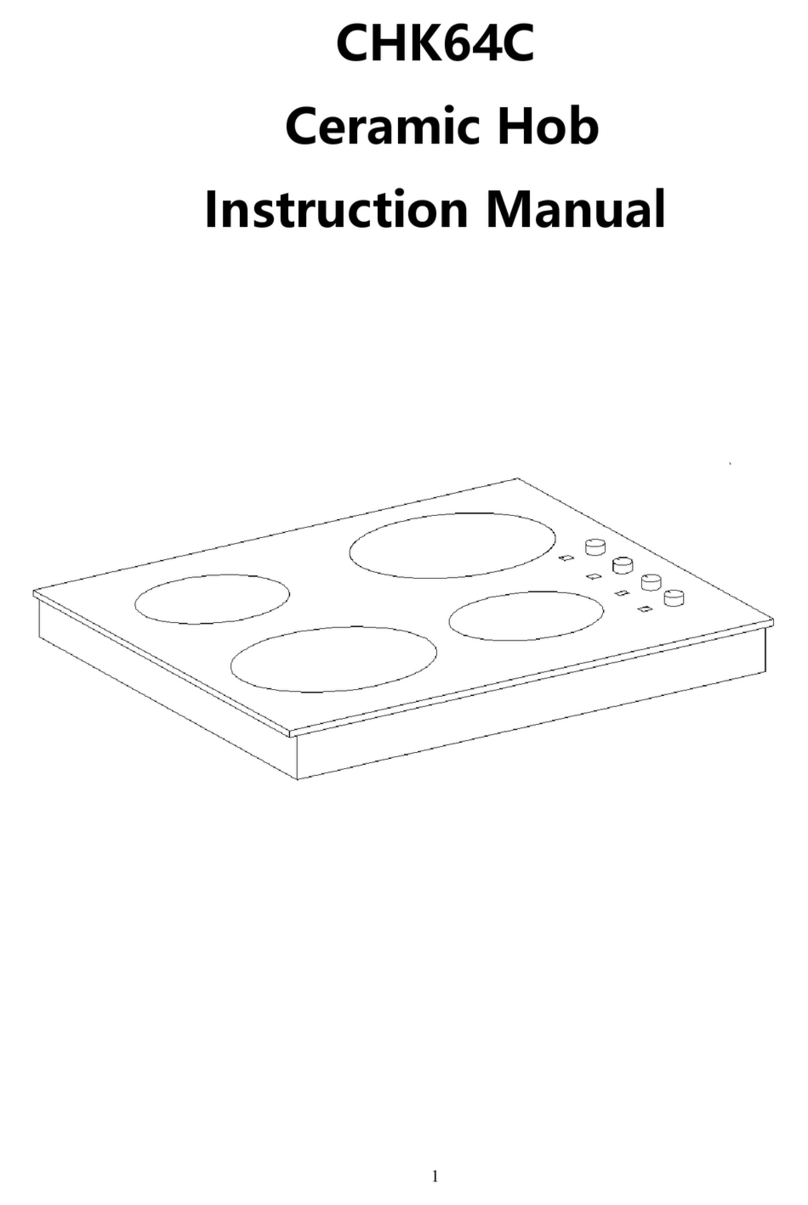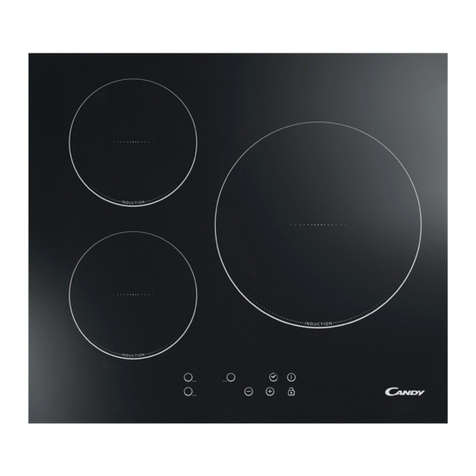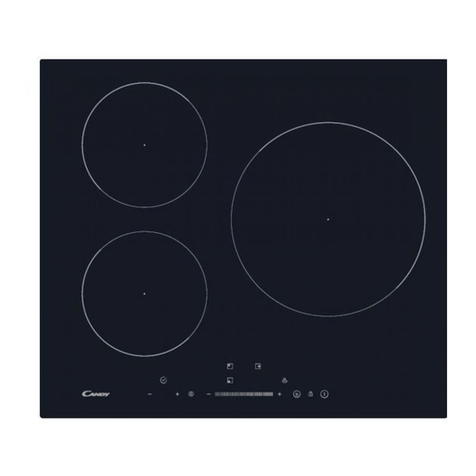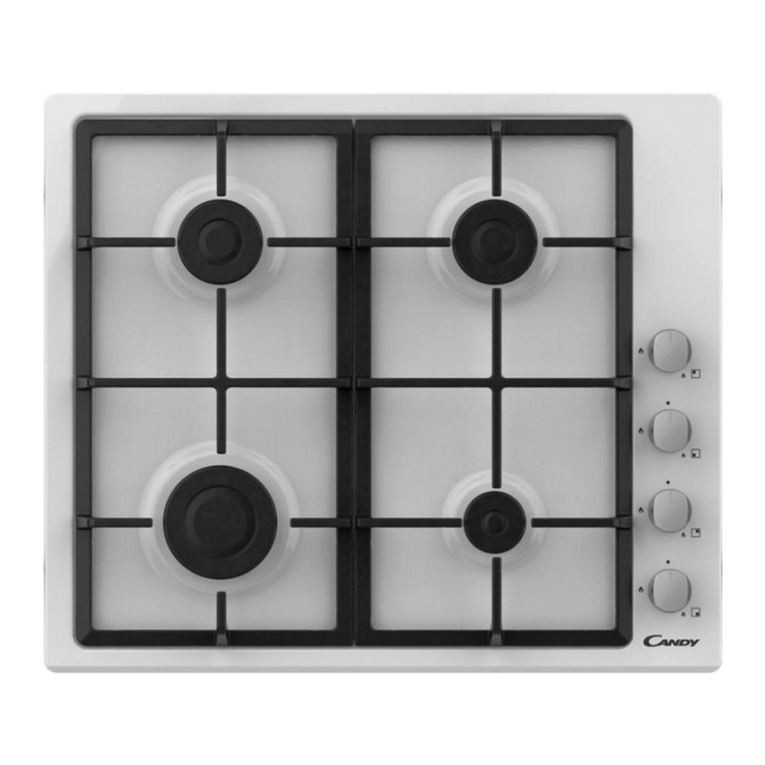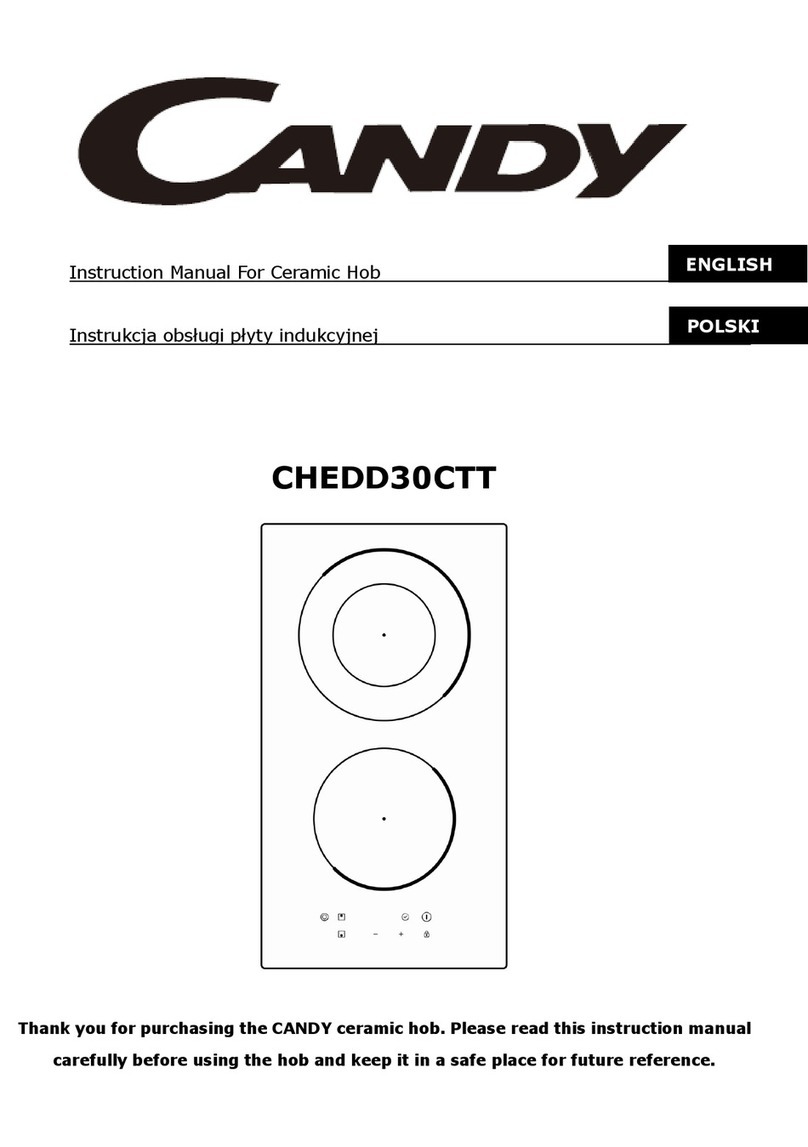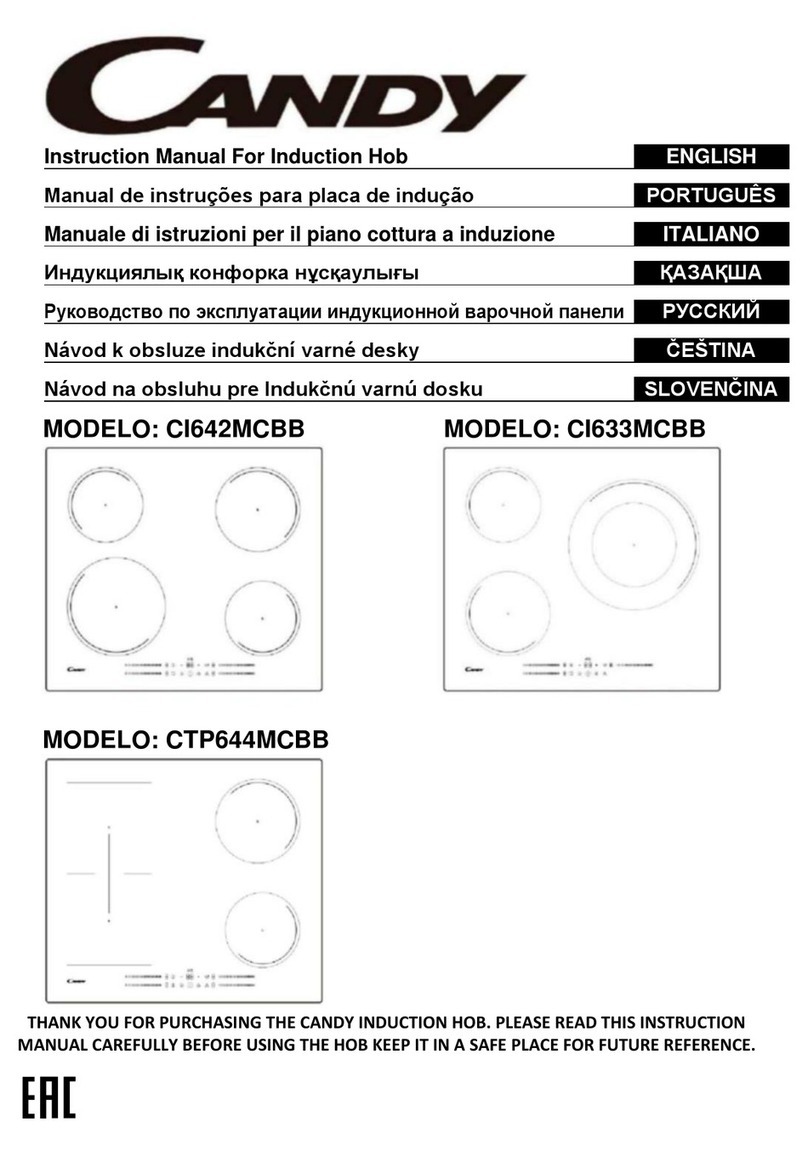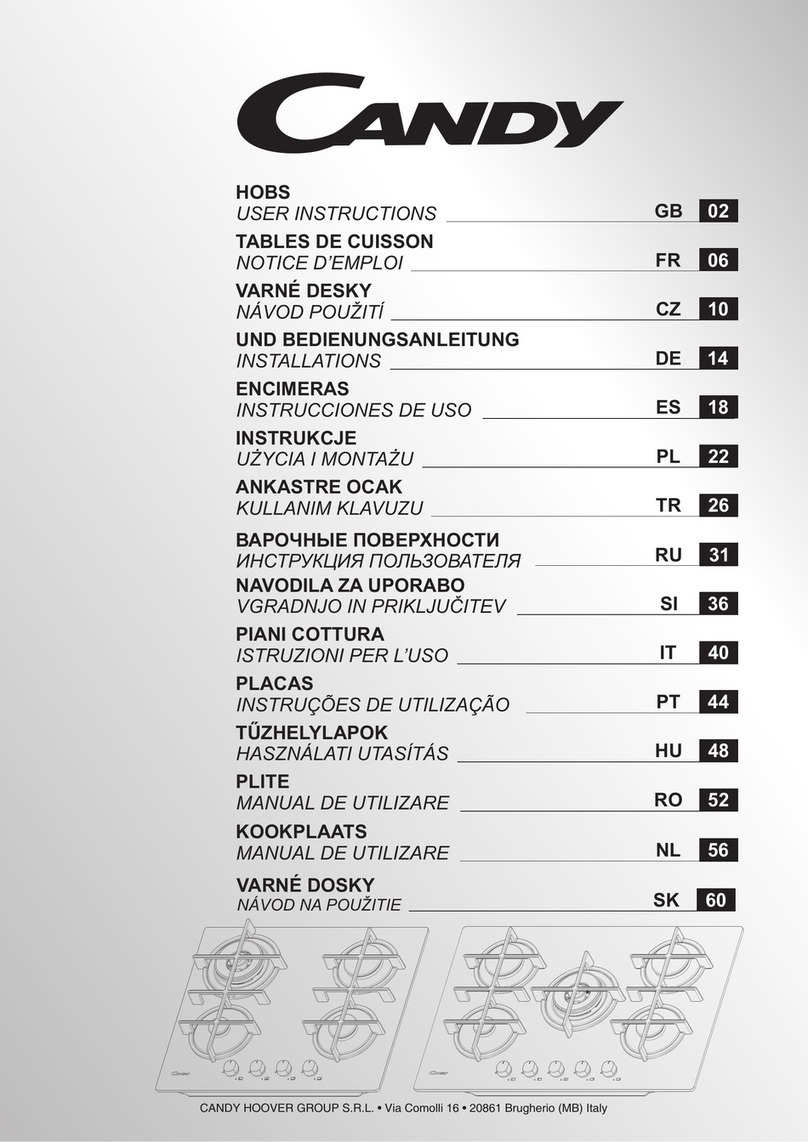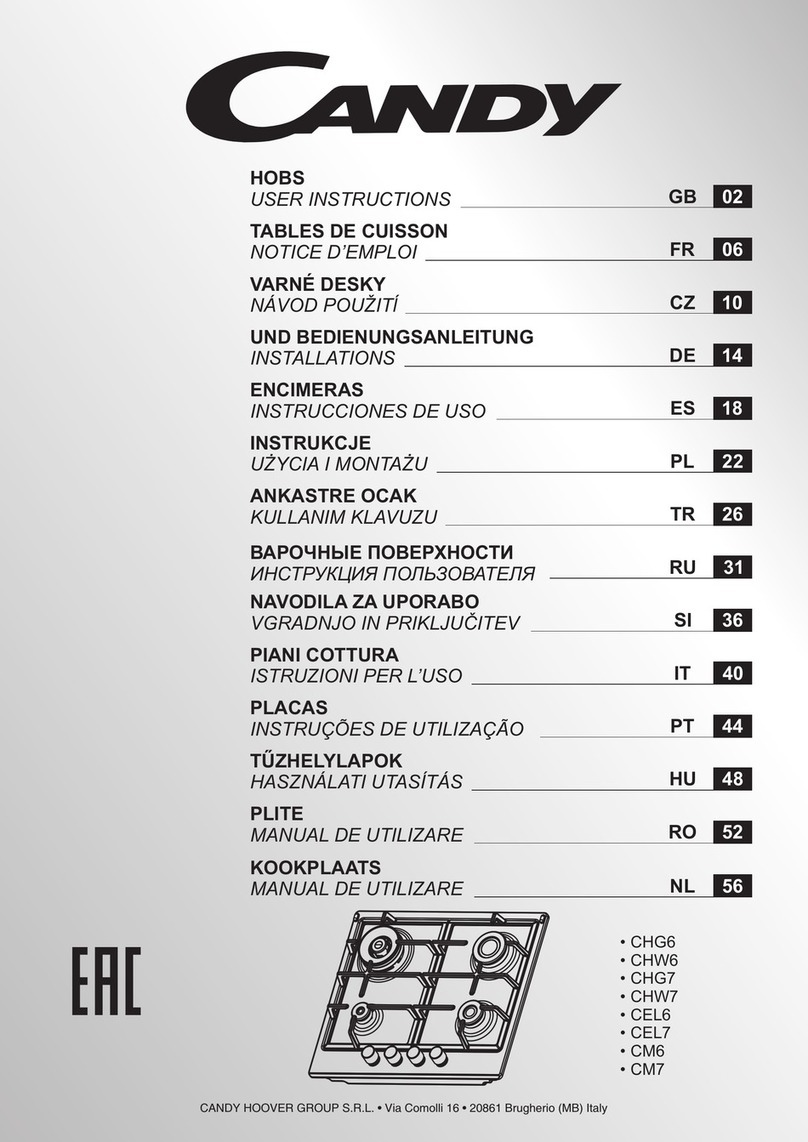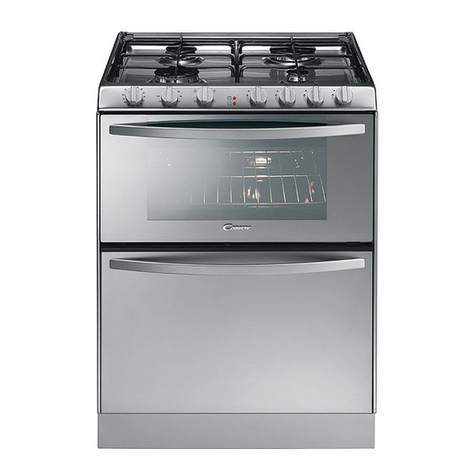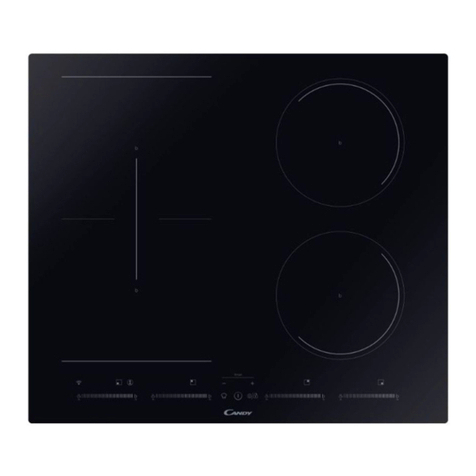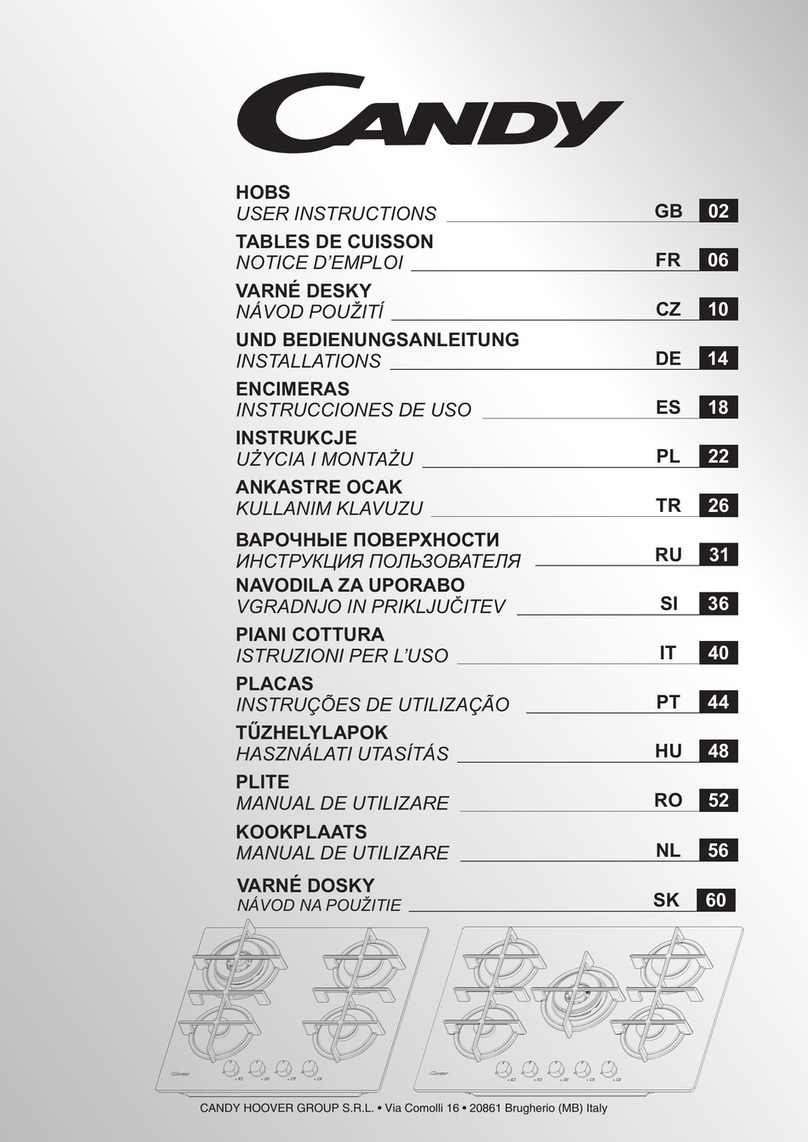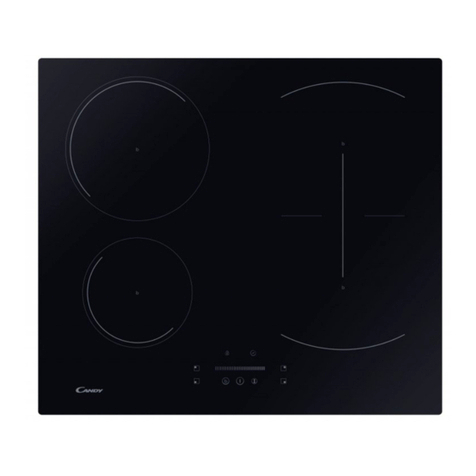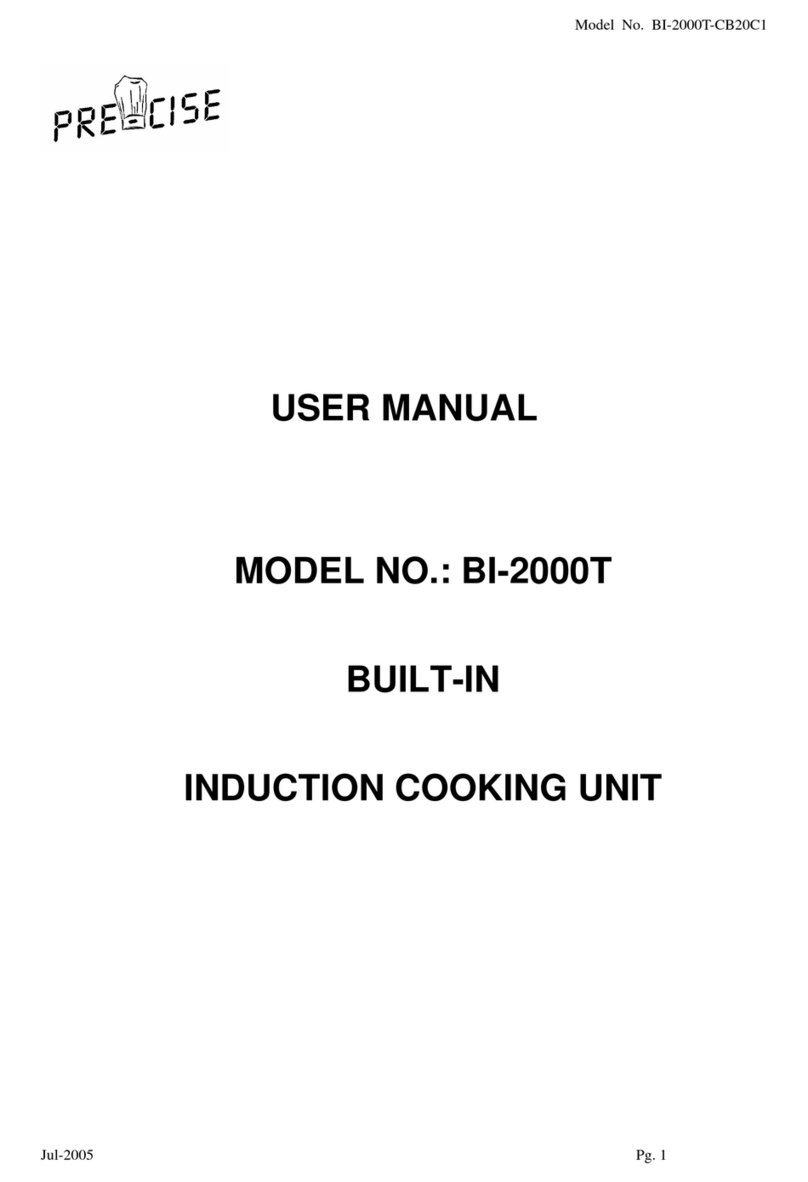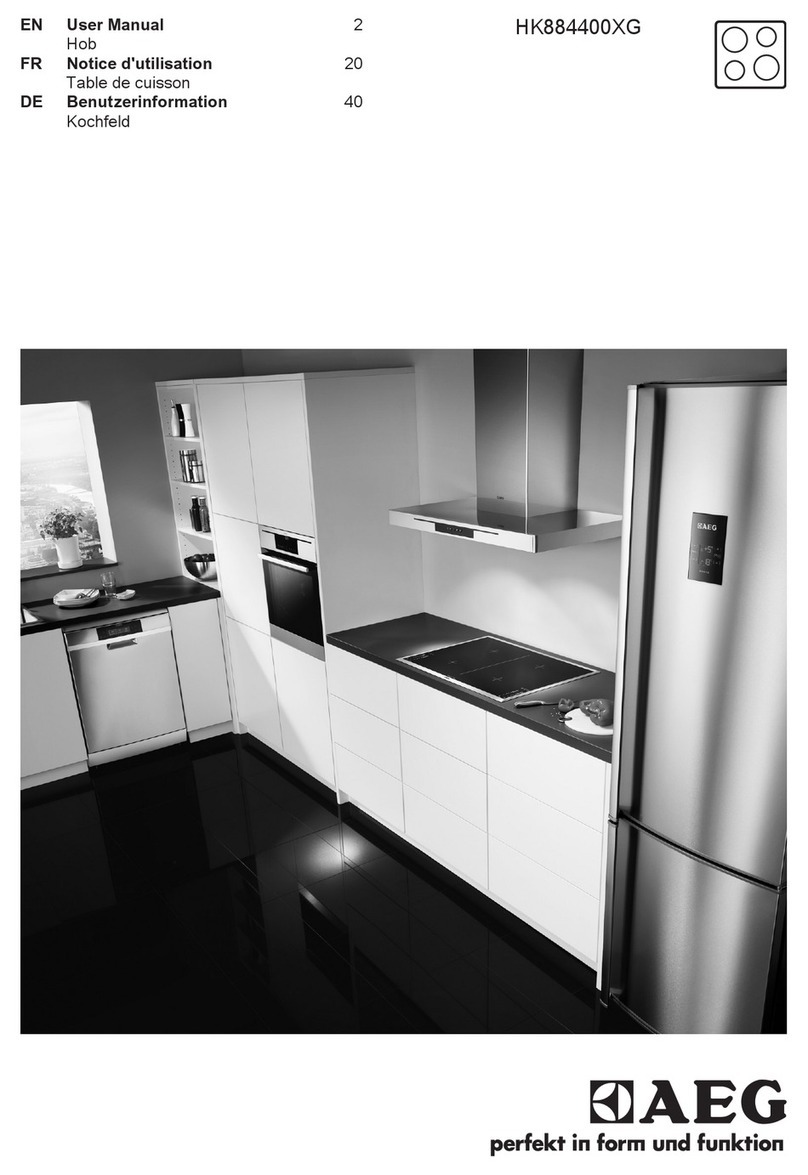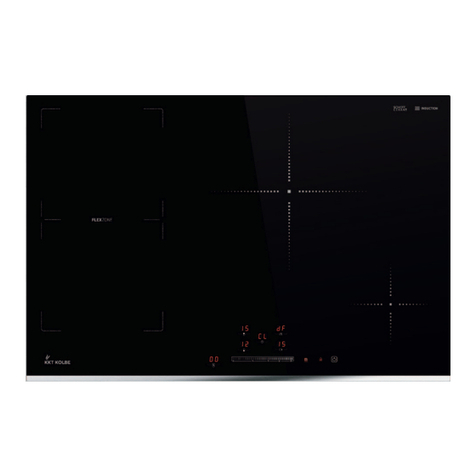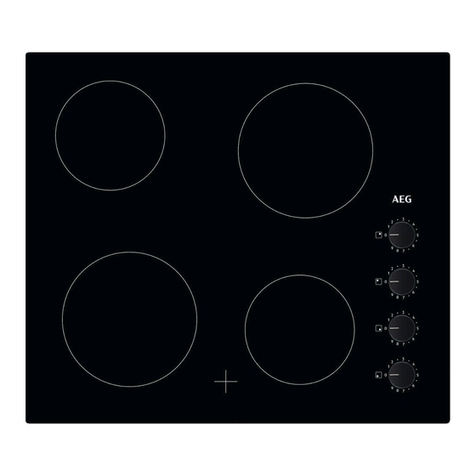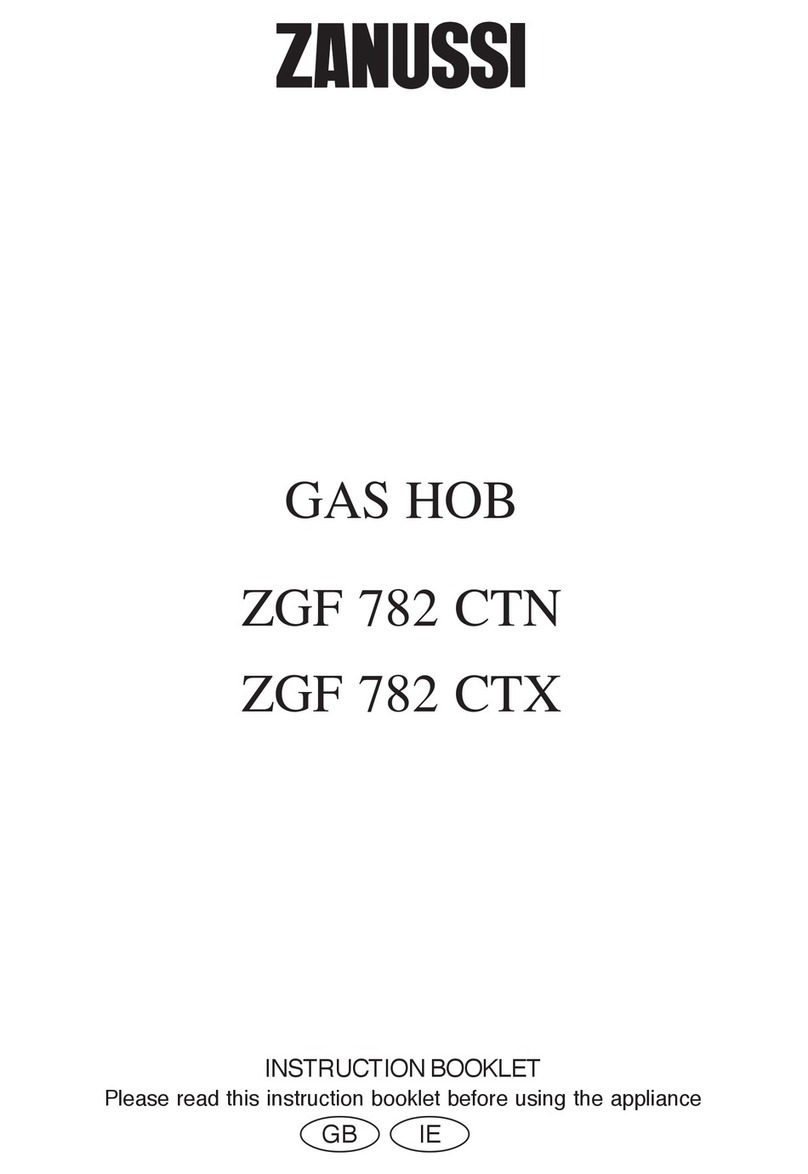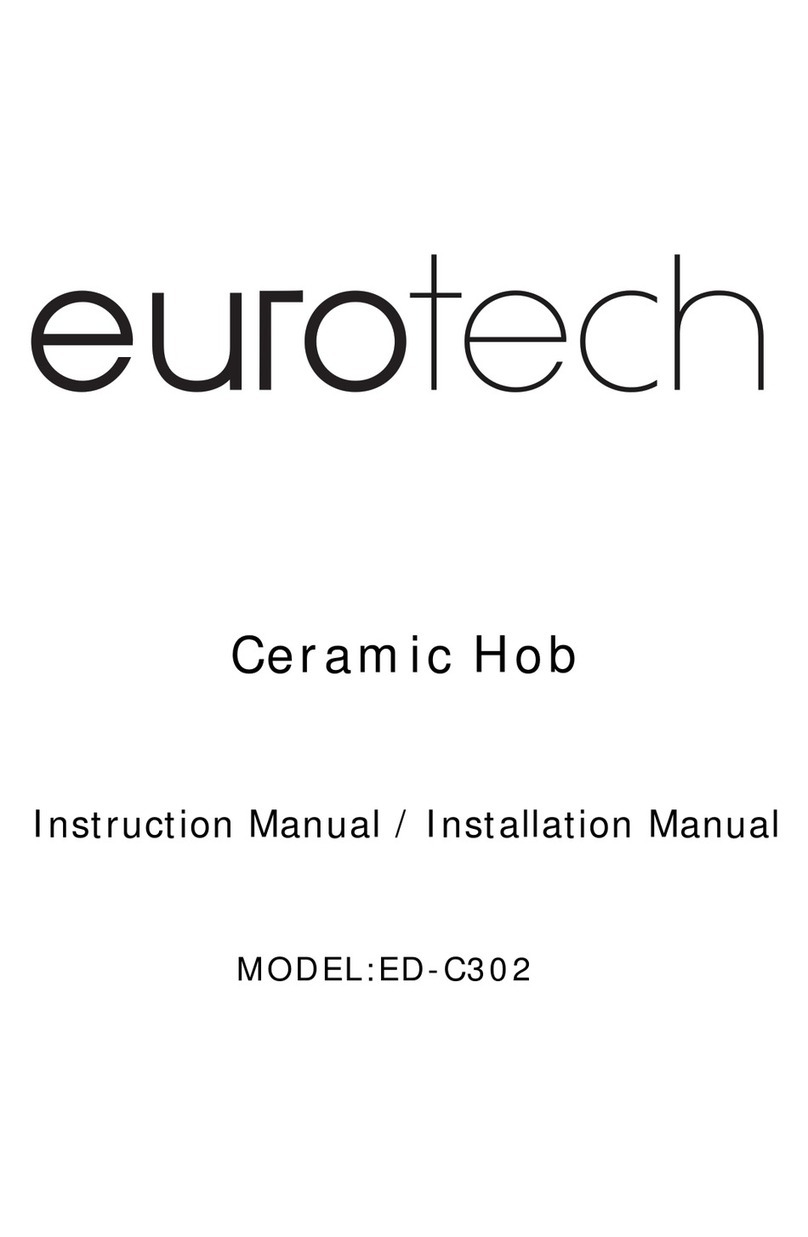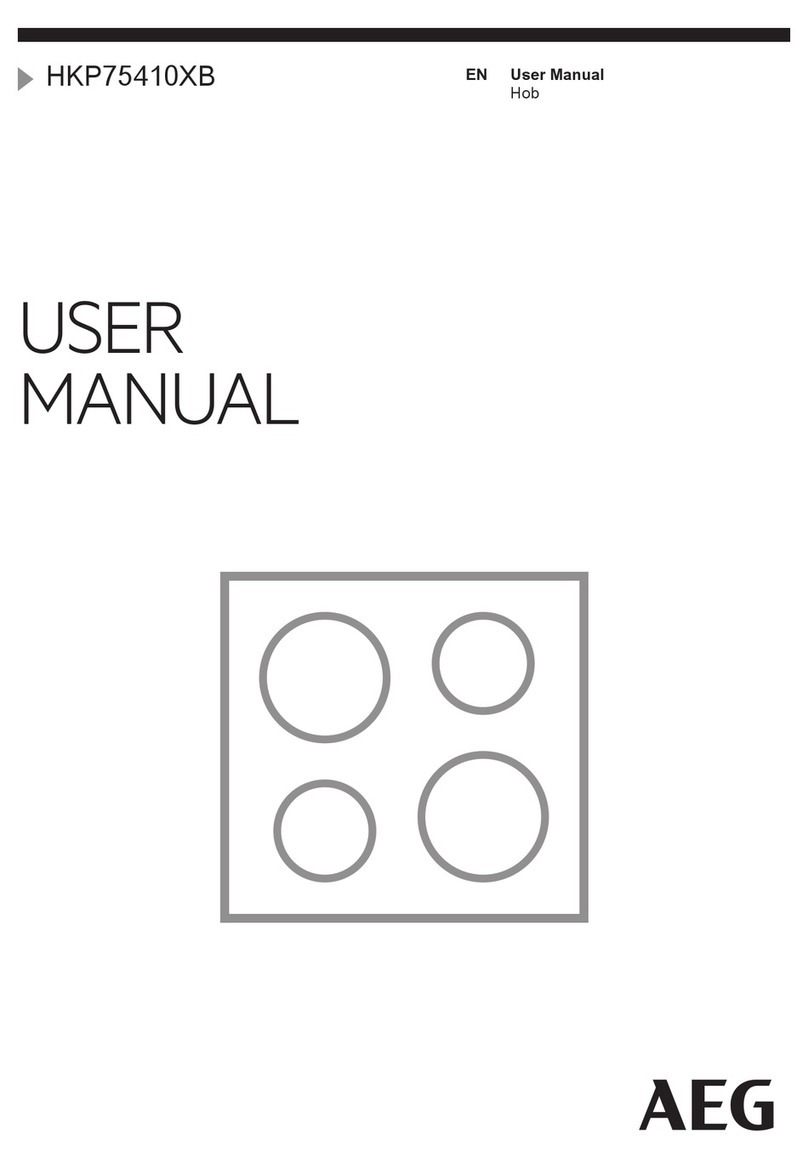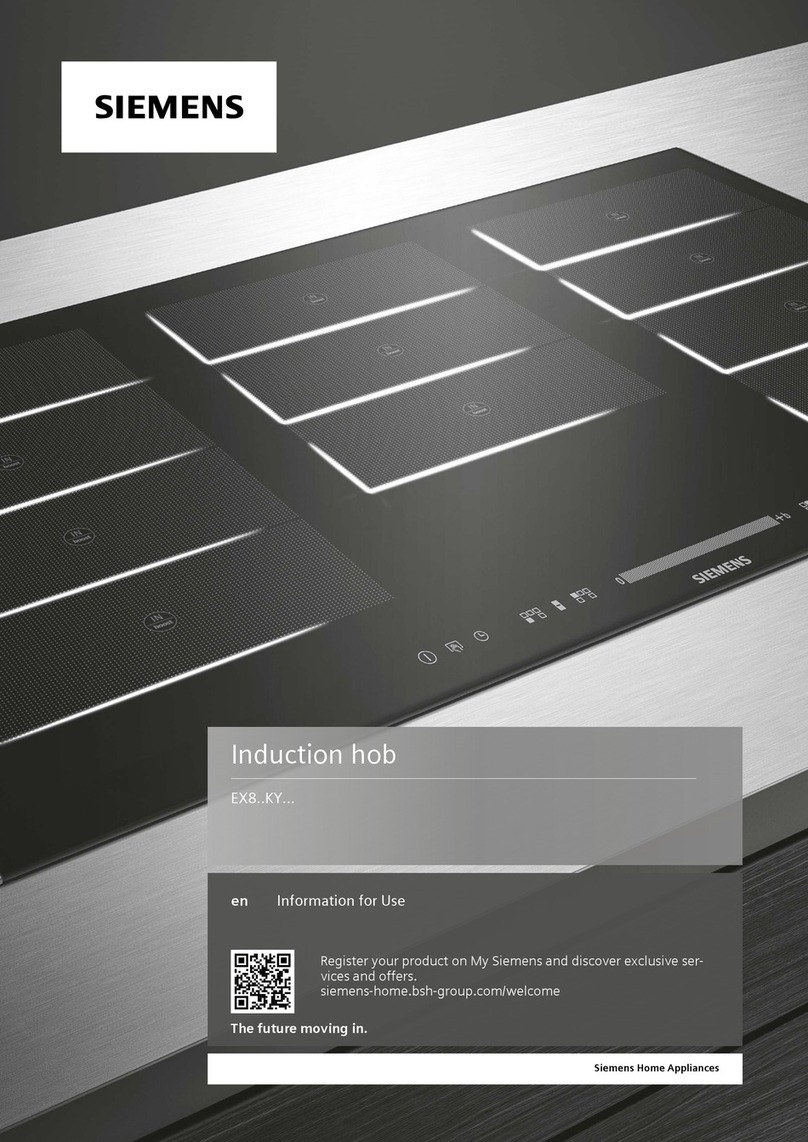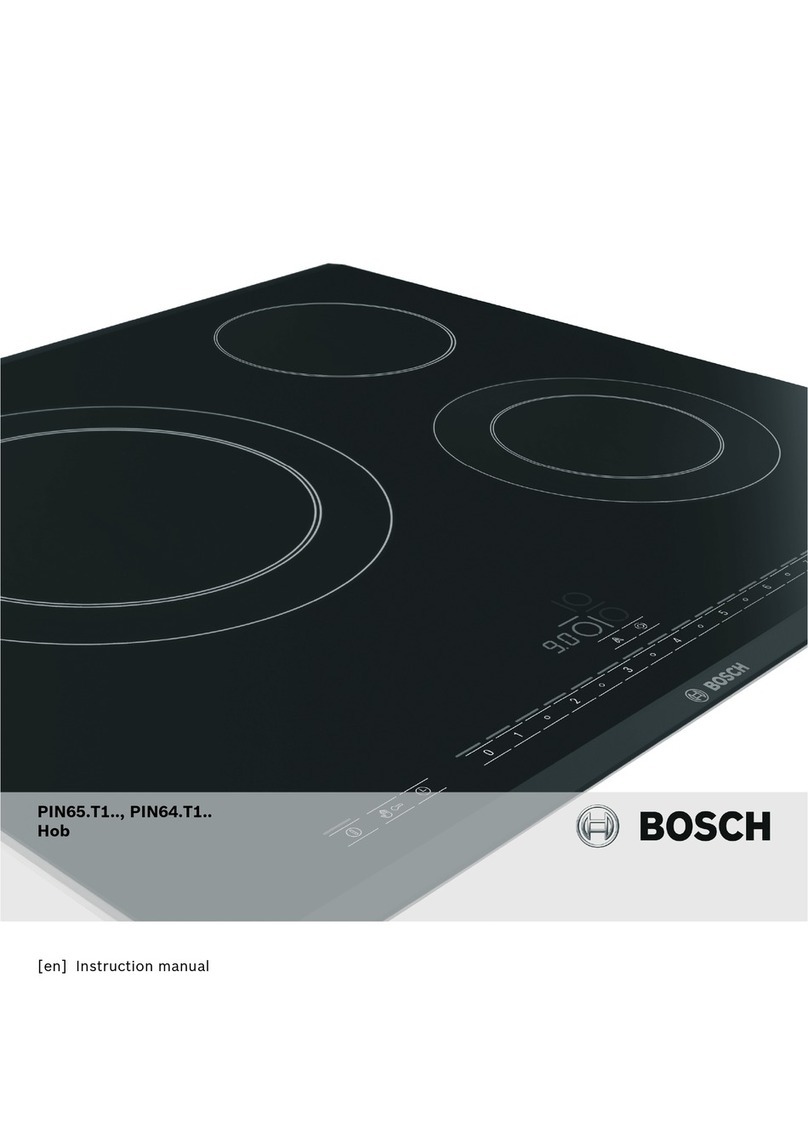
GAS BURNERS
Each burner is contolled by a tap with progressive settings allowing:
* a wider choice of settings from the maximum position to the
lowest and most precise one,
* easier flame regulation according to the pan diameter,
* no risk of cutting off the flame or switching off when the
flame is turned down quickly.
lTurn on the gas tap,
A symbol next to each control knob indicates which burner is lit.
lTurn and press in the relevant burner control knob to the
symbol, keeping it pressed in until the flame ignites. On
models fitted with electronic ignition the flame is ignited by an
electric spark. This is operated by the button or by pressing the
knob (for models with ignition under the knob).
For models not fitted with electronic ignition, or if there is no
electric power, light the flame with a match.
lSet the flame according to your cooking requirements.
Intermediate positions are available between the ( ) and ( )
settings on the control knob.
lTo turn the flame out, turn the control knob back to stop position.
lIf the burner is accidentally extinguished, turn the knob to “0”,
wait one minute and then try to ignite again.
PANS
For a proper use of the burners, choose pans which match the
dimensions given below :
* 9HU\IDVW FPDQGPRUH
)DVW IURPWRFP
6HPLIDVW FP
* $X[LOLDU\ FP
lPans with curved, ridged or warped bottoms are not
recommended.
lAluminium pans may leave marks on the enamelled
pan support. These marks can easily be removed with
a damp cloth and a light abrasive product.
SOME TIPS ....
lAvoid boiling food too intensely. Food is not cooked any more
quickly this way. In fact, it is subjected to severe agitation, which
may cause the food to lose some of its flavour.
To save gas, make sure that the flames do not overlap the bottom
of the pan.
l#o not use the gas burner with an empty pan.
IGNITION
RECOMMENDATIONS : when the burners are not in service,
the general gas supply tap should always be turned off.
NB: for models fitted with the SAFETY thermocouple, keep
the knob pressed in for a few seconds in order to activate
the safety system. If the knob is released straightaway
there is not time for the safety system to be activated and
the flame goes out. If this happens, repeat the ignition
procedure from the beginning waiting longer after the flame
is lit.
The rapid thermocouple safety device automatically cuts
off the gas supply if the flame is accidentally extinguished.
If there are particular local gas supply conditions which make
ignition difficult, you are advised to repeat the ignition procedure,
turning the knob to “minimum” ( ).
WATER CONNECTION :
The inlet and drain hoses can be directed to left or right.
The dishwasher can be connected to either cold or hot water, as
long as it is no hotter than 60°C.
Water pressure mut be between 0,08 MPa and 0,8 MPa. If the
pressure is below the minimum consult the service department
for advice.
The inlet hose must be connected to a tap so that the water supply
can be cut off when the machine is not in use (fig.1). The
dishwasher inlet hose is fitted with a 3/4" threaded connector
(fig.2). The inlet hose "A" should be tightly connected to a 3/4" tap
"B".
The water connection of the dishwasher must be done exclusively
with the pipe supplied. Do not use an old pipe.
If the machine is connected to new pipes or to pipes which have
not been in use for long time, run water through for a few minutes
before connecting the inlet hose. In this way no deposits of sand
or rust will clog up the water inflow filter.
The hose can be hooked over the side of the sink (it must not be
immersed in water, in order to prevent water from being siphoned
back to the machine when this is in operation) Check that there
are no kinks in the inlet and outlet hoses. To extend, if necessary
the intlet hose, contact the Customer Service.
:$7(5&211(&7,21:$7(5'5$,1$*(
USE
INSTALLATION
4
WATER DRAINAGE :
Take care not to bend or kink the drain hose when connecting it
to the machine so that the water can drain freely from it (fig.4y).
The drain hose must be at least 40 cm above floor level and it
must have an internal diameter af at least 4 cm. It is advisable to
fit an anti-odour air trap (fig.4x).
If necessary, the outlet hose can be extended up to 2,6 m, provided
that it is kept at a maximum height of 85 cm above floor level. For
this, contact Customer Service.
09 GB
